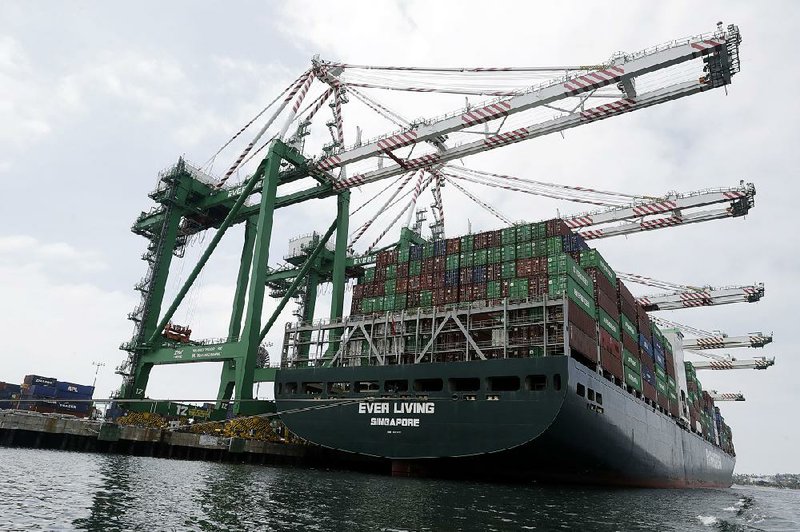WASHINGTON -- The U.S. trade deficit rose to a five-month high in May as the politically sensitive imbalances with China and Mexico widened.
The Commerce Department said Wednesday that the gap between the goods and services the U.S. sells and what it buys from foreign countries rose 8.4% to $55.5 billion in May, the highest since December. Exports increased 2% to $210.6 billion on rising shipments of soybeans, aircraft and cars. But imports climbed more -- 3.3% to $266.2 billion -- on an increase in crude oil and cellphones.
The deficit in the trade of goods with Mexico rose 18.1% to a record $9.6 billion. The goods gap with China widened 12.2% to $30.2 billion.
President Donald Trump has sought to reduce America's persistent trade deficit, which he sees as a sign of economic weakness and the result of bad trade agreements crafted by naive U.S. negotiators. He has imposed tariffs on foreign steel, aluminum, dishwashers, solar panels and on thousands of Chinese goods. He also has renegotiated a trade pact with Canada and Mexico that awaits approval by Congress.
And his team has conducted 11 rounds of talks with China aimed at pressuring Beijing to curb its aggressive push to challenge American technological dominance, an effort that is alleged to include cybertheft and forcing foreign companies to hand over trade secrets.
Mainstream economists say the trade deficit is the product of economic factors that don't respond much to changes in trade policy: Americans buy more than they produce, and imports fill the gap. And a persistently strong U.S. dollar also puts American exporters at a price disadvantage overseas.
So far this year, the goods-and-services deficit is $261.4 billion, up 6.4% from January-May 2018.
In May, the United States ran a $76.1 billion deficit in the trade of goods such as appliances and cars. That was partially offset by a $20.6 billion surplus in the trade of services such as banking and tourism.
After meeting Saturday with Chinese President Xi Jinping, Trump said the U.S. and China would restart negotiations as he holds off from imposing tariffs on an additional $300 billion on goods from the Asian country, though existing levies remain.
The worldwide grounding of Boeing Co.'s 737 Max model continued to weigh on the U.S. economy. While civilian aircraft exports rose to $3.1 billion in May, it's still the second-lowest monthly total since 2012, according to data compiled by Bloomberg.
The report suggests net exports were on track to drag down the pace of expansion in the second quarter after giving a big boost in the previous period, though the monthly figures have been volatile because of tariffs. Chinese imports and exports both surged, potentially reflecting companies rushing shipments ahead of Trump's latest increase in levies announced in May.
Economists in a recent survey expected second-quarter growth to slow to a 1.8% annual pace from 3.1% in the first three months of the year, based on the median estimate.
A separate government report on Wednesday showed filings for U.S. unemployment benefits fell for the second time in three weeks, a sign the labor market is holding up before June jobs data are released Friday.
Information for this article was contributed by Paul Wiseman of The Associated Press and by Katia Dmitrieva of Bloomberg News.
Business on 07/04/2019
